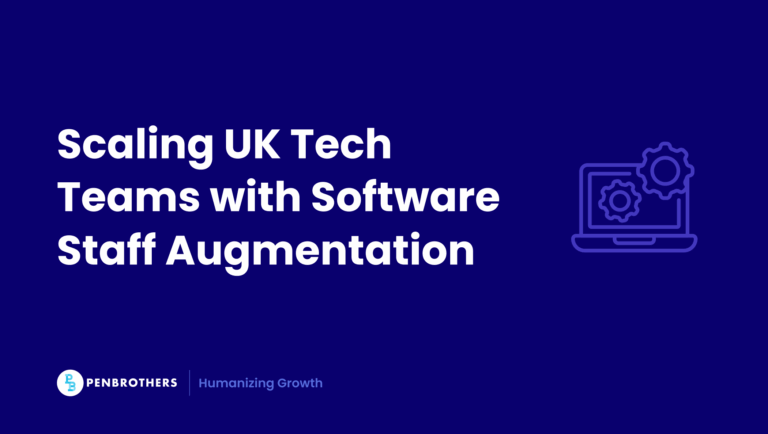The first 60 days of a new hire’s journey set the tone for everything that follows. It’s not just a milestone. It’s a window into whether you made the right hire. Whether they feel equipped. Whether they’re on track to deliver value.
For companies hiring remotely or offshore, this midpoint matters even more. There is no office hallway to casually align. No coffee breaks to observe signals of struggle.
And here’s the secret: great onboarding isn’t just about the plan. It’s about measurement. That’s where onboarding metrics come in. To make sure you’re setting up your new hires for success, see how onboarding timelines can be structured for clarity and impact.
Why Track Onboarding Metrics?
Peter Drucker famously said, “What gets measured gets managed.”
We agree. If you don’t track what’s happening with a new hire, you can’t expect to improve it. Or scale it. Or prevent the early churn that eats away at hiring ROI.
In remote-first or offshore models, data matters even more.
When you track onboarding metrics during the first 60 days, you gain early visibility into:
- Misalignment with expectations
- Gaps in performance or cultural fit
- Bottlenecks in workflows, access, or productivity
You can step in before a small issue becomes a resignation.
In fact, according to SHRM, 69% of employees are more likely to stay with a company for three years if they experience great onboarding. Yet Gallup reports that only 12% of employees strongly agree their organization does a great job onboarding. That disconnect creates risk.
Key Metrics to Track by Day 60 (Hypercare-Aligned)
At Penbrothers, our Hypercare Framework is designed to surface the right signals, early. These are the onboarding metrics we focus on by Day 60:
- Check-in Completion Rate
- Were the first and second month check-ins conducted on time?
- A low rate signals process breakdown. It means you’re missing valuable context.
- Goal Progress (2nd & 3rd Month Goals)
- How is the new hire tracking against goals set during onboarding?
- We look for small wins. Contributions. Signs of momentum. For those creating structured job goals, having a solid role description makes it easier to measure progress objectively.
- Employee Performance Review Outcomes
- The Day 60 review is critical. It helps assess value delivery, skill application, and red flags before the 90-day mark.
- We document these insights and adjust coaching accordingly.
- Workflow Excellence
- Is the new hire working efficiently within existing systems?
- This includes tool usage, task tracking, and SOP adherence. The right HR software tools can make this measurement easier and more transparent for remote managers.
- Coaching & Feedback Engagement
- Is the new hire showing responsiveness to coaching?
- Are feedback loops being used consistently by managers?
- Engagement in this area reinforces a culture of alignment.
- New Hire Satisfaction & eNPS
- We use short surveys to ask: How satisfied are you with your onboarding experience? Would you recommend this company?
- These metrics are a litmus test for engagement and advocacy.
- Team Integration Feedback
- Managers and peers are asked for short, structured feedback.
- Is the new hire communicating clearly? Participating actively? Fitting into the team dynamic?
How Metrics Fuel Better Hypercare
This isn’t data for data’s sake. These metrics shape decisions.
They help managers re-align expectations before it’s too late. They highlight gaps in process or training. They reduce unnecessary churn.
More importantly, they make onboarding replicable. Especially for businesses hiring at scale or across time zones.
According to BambooHR, employees who had a structured onboarding program were 58% more likely to remain with the organization after three years. That kind of retention saves both time and money.
When we work with clients through the Hypercare Framework, onboarding metrics become a shared language. They bridge the gap between people ops and business outcomes.
Red Flags Before Day 60
What should make you pause? Here are the early signs we watch closely:
- Missed check-ins or lack of manager engagement
If the scheduled 30- or 60-day check-ins aren’t happening, or if the manager is not actively involved, there’s a breakdown in the onboarding support structure. Either the new hire is not being guided properly, or the feedback loop is broken. - Unmet 30-day goals with no clear plan forward
Missing early goals isn’t always a dealbreaker. But failing to reset expectations, clarify blockers, or develop a recovery path? That’s a sign of poor communication, low accountability, or misalignment from the start. To avoid mismatches that lead to early churn, invest in an applicant tracking system that helps screen for role fit and alignment before onboarding even begins. - Coaching feedback not applied or repeated missteps
New hires are expected to learn through feedback. But if the same issues are flagged repeatedly, missed details, soft skill gaps, or protocol violations, it indicates a gap in coachability or learning agility. - Low eNPS or dissatisfaction in onboarding surveys
If an employee indicates early disengagement, confusion, or regret about joining, those sentiments don’t usually improve on their own. Survey data gives you a chance to act before they mentally check out or leave. - Workflow errors or lack of ownership in tasks
Mistakes are part of the learning curve. But consistent errors in critical processes, missed deadlines, or a lack of initiative to solve problems show that the new hire may not be ready for the role they were hired into.
One red flag may be recoverable. Several? It may be time to reconsider the fit.
What Makes Penbrothers Different
We don’t just hand you a remote hire and wish you luck. We stay with you. We manage onboarding, performance tracking, and ongoing support.
With our Hypercare Framework, you’re not just tracking onboarding metrics. You’re acting on them. You’re making data-backed decisions about people. And that’s what makes offshore staffing work.
NetSuite outlines this well: onboarding metrics like time to productivity and training completion are essential to maximize the ROI of hiring efforts.
Final Thoughts
The first 60 days aren’t just a probationary period. They’re a preview of what’s to come. They reveal how your culture translates remotely. They show whether your support systems are built for scale. And if you’re using onboarding metrics the right way? They give you the power to fix, adapt, and grow.
Onboarding is no longer just HR’s job. It’s a shared responsibility across operations, leadership, and outsourcing partners.
At Penbrothers, we don’t just fill roles, we make sure the people you hire succeed in them. Our Hypercare Framework equips your team with the structure, coaching, and performance insights needed to build real momentum by Day 60 and beyond.
Ready to turn your offshore hires into high-performing team members?
Let’s talk.






